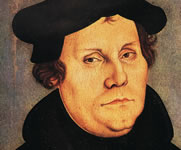Famous People
- Fairytale refuges for the fairytale king
- A paradise born of the Age of Enlightenment
- Fruits borne of strong women
- The “Sun King” of Saxony
- A romantic symbol of German history
- “My heart belongs to my garden”
- Royal life in modern times
- One masterpiece by two geniuses
- Monument to a passion for horticulture
- Count Bernadotte's flower island
- Preserving the cultural heritage
- Retreat for a king and philosopher
- A successful symphony of art and nature
- A Guelph family heirloom
Retreat for a king and philosopher
Prussia's most famous king, Frederick II (1712-1786), was also known as Frederick the Great or “Old Fritz”. He was a legend in his own lifetime but his personality was marked by conflicts: he was a patron of the arts, but also a ruthless politician, a leading supporter of the Enlightenment and tolerance (“Let every man seek heaven in his own fashion”) yet he clung to absolutism. Frederick II ascended the throne in 1740, aged 28, and under him Prussia grew into the continent's fifth major power, earning him the sobriquet “the Great”. The philosophising misanthrope loved his dogs more than his banished wife, and he self-mockingly referred to his New Palace as “fanfaronade” – vainglory.
Sanssouci Palace & Park, Potsdam
Show on map »
New Palace, Potsdam

Show on map »
Chinese House
Show on map »
Travel Planner
Select an option...
Location
- Sanssouci Palace & Park, Potsdam
- New Palace, Potsdam
- Chinese House



